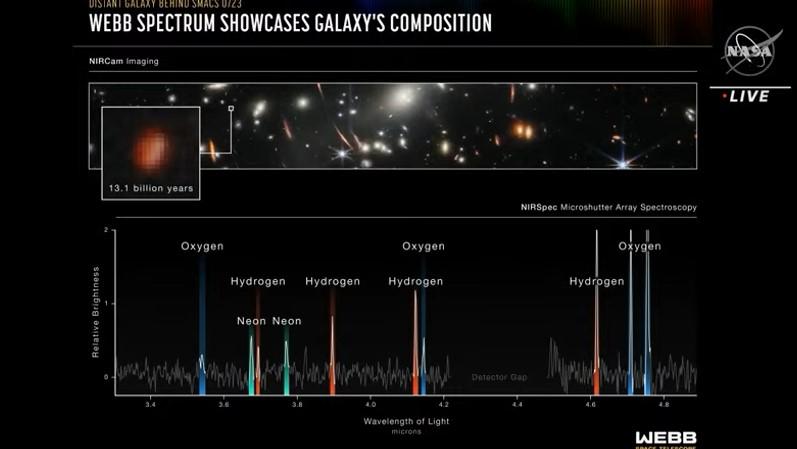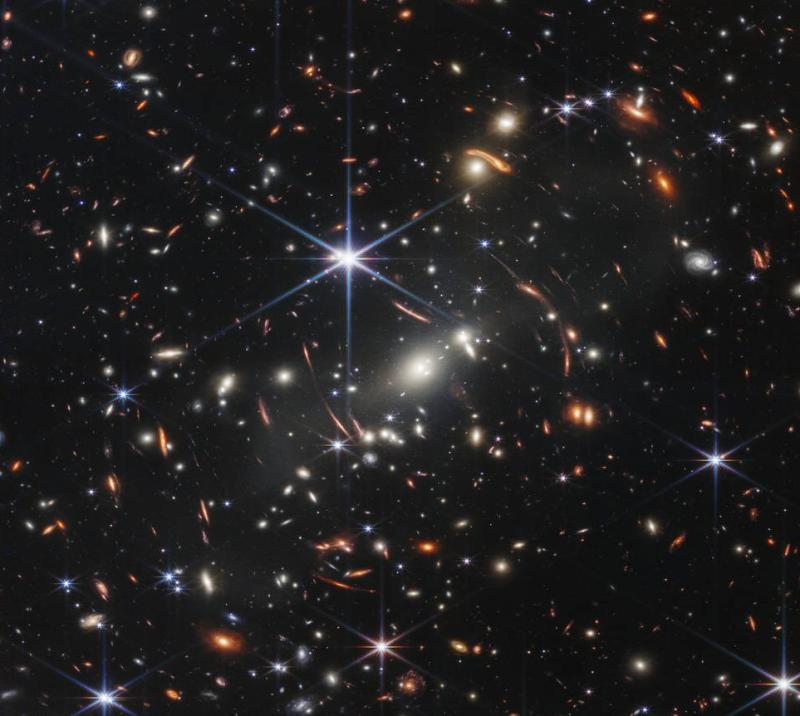Astronomers revealed new tantalizing images from the Webb Space Telescope on Tuesday, including an active black hole in Stephan’s Quintet about 290 million light years from Earth.
The cluster of five galaxies was first discovered by French astronomer Edouard Stephan in 1877. The newest Webb image brings out details never seen before of galaxy NGC 7319, located at the top of the image. It contains a supermassive black hole 24 times the mass of Earth’s Sun and is seen actively pulling in material while simultaneously putting out light energy of 40 billion suns.
The black hole itself cannot be seen, but its gravitational force pulls in heated gases that appear very bright in the image. With Webb, scientists can break apart the light being emitted to examine the composition, temperature and movement of gases for a better understanding of the physics involved in star birth, life and death.

The main Stephan’s Quintet image contains 150 million pixels and is made up of 1,000 separate image files.
In all, five images were revealed during a special NASA TV presentation seen online around the globe by watch parties, including some of the 20,000 scientists and engineers on the 25-year-long Webb project that has cost about $10 billion. Representatives from NASA, the European Space Agency, Canadian Space Agency and primary contractor Northrup Grumman celebrated the achievement, the largest international space mission ever.
At several points in its 25-year creation, it wasn’t clear Webb would ever make it 1 million miles from Earth to take its infrared images that are later enhanced with colors appropriate for different bands in the light spectrum.
President Biden viewed the first of the five images Monday in the White House, a glimpse of SMACS 0723, a galaxy cluster made up of thousands of galaxies 13 billion light years away near the edge of the known universe.

In addition to SMACS 0723 and Stephan’s Quintet, officials revealed Webb images of WASP -96b, a hot planet outside our solar system, the South Ring Nebula, a planetary cloud of gas surrounding a dying star and the Carina Nebula.
NASA scientists described the science and engineering achievements of Webb, as well as the international partnership it thrives upon and the spirit of scientific discovery it opens up to the world through new images splattered with brilliant colors and shapes.
“Every dot of light is an individual star not unlike our sun, and many also have planets,” noted Amber Straughn, Webb deputy project scientist, communications. “We were formed out of the same stuff we find here.”
NASA Administrator Bill Nelson, an astronaut in the 1980s, said Webb is designed for people everywhere to learn about the universe. In fact, hundreds of astronomers have lined up to book time with Webb for viewing particular angles of space over what promises to be 20-plus years. Due to a precise liftoff aboard the Ariane 5 rocket last Christmas Day, enough fuel remains for Webb to stay in orbit around the Sun at least twice as long as earlier expected, he noted.
“Webb represents the best of NASA and it maintains our ability to propel forward for science, risk taking and inspiration,” Nelson said. “We don’t want to ever stop exploring the heavens. In the words of astronomer Carl Sagan, ‘Somewhere, something incredible it waiting to be known.’ Those words are becoming reality.”
RELATED: Webb’s primary mirror is fully deployed, a gold-star engineering feat